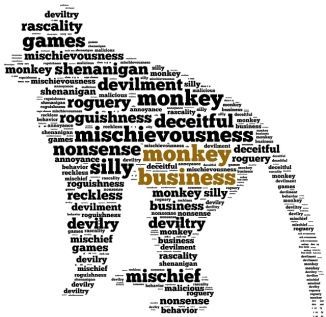Don’t Litter Your Marketing with These Kinds of Stock Images
We’ve all heard statistics about how images tend to lead to more views and more engagement, whether we’re talking about blog posts, websites or virtually any social media channel.
Images are easier for the human brain to process than words. In fact, MIT scientists found that the brain can process an entire image in 13 milliseconds.
I share this statistic as a content writer whose job is to produce the right words, not images.
However, images are just like any other component of your marketing strategy. If you’re not putting enough thought into them, they’re not helping.
And they could be hurting.
Now that the content floodgates have opened, certain types of stock images have the same effect as those awful marketing clichés that have made me cringe for years – highest quality, lowest prices, knowledgeable staff, best customer service.
These kinds of stock images are like marketing clichés because they’re woefully stale, and they don’t really say anything. They’re glossed over because people have seen them or something similar hundreds of times.
Most importantly, they do nothing to enhance or reinforce your core marketing message or make someone more likely to read what you have to say.
Here are a few types of generic stock images that are like marketing clichés and should never appear in your marketing.
Shiny Happy People
No disrespect intended to REM, but the generic stock images that feature these shiny happy people with perfect hair, perfect teeth and perfect clothes don’t represent any work environment I’ve ever visited.
This photo is the perfect staff. Men and women. Ethnically diverse. All thin and with bright smiles in a conference room overlooking a spectacular city skyline.
But is this what your staff looks like? Is this what your customers look like?
If it’s not authentic, people will notice. And they might wonder what else about your company isn’t authentic.
Just once, I’d like to see a real photo of a team that just spent a week going wall-to-wall, working their asses off to get a project done. I guarantee it looks nothing like this generic stock image.
And how about a group high five at the end of a hard day’s work, ala the photo at the top?
Phony Baloney People
In many stock images, the cheesy look is intentional. In many more stock images, the “actors” are trying to convey an emotion and failing miserably.
This image is attempting to illustrate the woman’s fear of the dentist. Has anyone in the history of root canals ever reacted this way when visiting the dentist?
Again, if people don’t think your images are believable, how do you think they’ll perceive your content? And your company?
Shadow People
Stock images of shadow people come in many shapes and sizes and are supposed to represent certain groups of people.
This image shows a group of shoppers. That’s why they’re carrying shopping bags and pushing shopping carts. I get it.
 But they’re shadows. When did marketing turn into Ghost Hunters?
But they’re shadows. When did marketing turn into Ghost Hunters?
Instead of showing a large group of faceless shadow people, how about taking a photo of actual human shoppers, or at least finding a stock photo that shows real people shopping for a relevant product?
By the way, generic stock images of bubble people shouldn’t appear in your marketing content for the same reason. Am I the only one who thinks this creepy little bubble guy just stepped off a UFO?
People Holding Signs
This is what happens when people can’t find a stock photo that clearly conveys a certain thought or message – or they don’t feel like looking very hard to find one.
Instead, they use a photo of a person holding a sign that spells out their thought because this photo was on the first page of search results on the stock image website.
I guess it’s now trendy on Twitter to take a photo of someone holding up a sign to share a deep thought, but that doesn’t mean you should take the same approach with your marketing.
Word Clouds
This one is in the shape of a monkey. Because it’s supposed to convey monkey business. How clever.
The purpose of using an image in your marketing is to draw attention to your content in a way that’s visually appealing and easy to absorb.
There is nothing visually appealing or easy to absorb about a bunch of words going in different directions like a puzzle. Assembling those words in the shape of a cute animal doesn’t help.
The only thing worse than sticking a word cloud in the sidebar of your website is using a stock image of a word cloud as a featured image in your marketing.
The Key on the Keyboard that Doesn’t Exist
I don’t know what else to say about this one because I just don’t get it. What’s the point of putting a random word on a keyboard?
That’s even worse than having a person hold up a sign with that word on it.
Yet I see it all the time.
Street Signs
You’re at a crossroads. Choose your path. Success or failure. Sunshine or lightning.
A real cliffhanger. My heart is pounding.
I get the metaphor, but it’s the same metaphor on every single stock image that uses a street sign, whether it has arrows or an off-ramp.
And I’ve seen some variation of a street sign over and over and over. Enough.
Choosing an Image. Or Not.
I could have made a longer list, but you get the point. And I didn’t want to use up all of my Big Stock points.
Yes, I use stock images on my website and most of my posts on the McBlog.
You don’t have to hire a photographer every time, although I highly recommend it if you have the means. You also don’t have to take photos yourself and use an original every time, especially if you’re not a talented photographer.
You can use stock images. Just dig a little deeper and put some thought into choosing them.
I’m all for clarity and being direct, but the image doesn’t always have to be a literal representation of your content’s message. Use metaphors and analogies just like you would use them in your written content.
Ultimately, the image you use should reinforce or enhance your core marketing message. Otherwise, it can be a distraction, cheapen your content and create negative perceptions in the eyes of your audience.
If you can’t find an image that supports your message, don’t use one. There’s no rule that says you absolutely have to use an image, whether it’s a blog post or the home page of your website.
Choose images wisely. But for goodness sake, don’t use one that looks anything like the images above.









